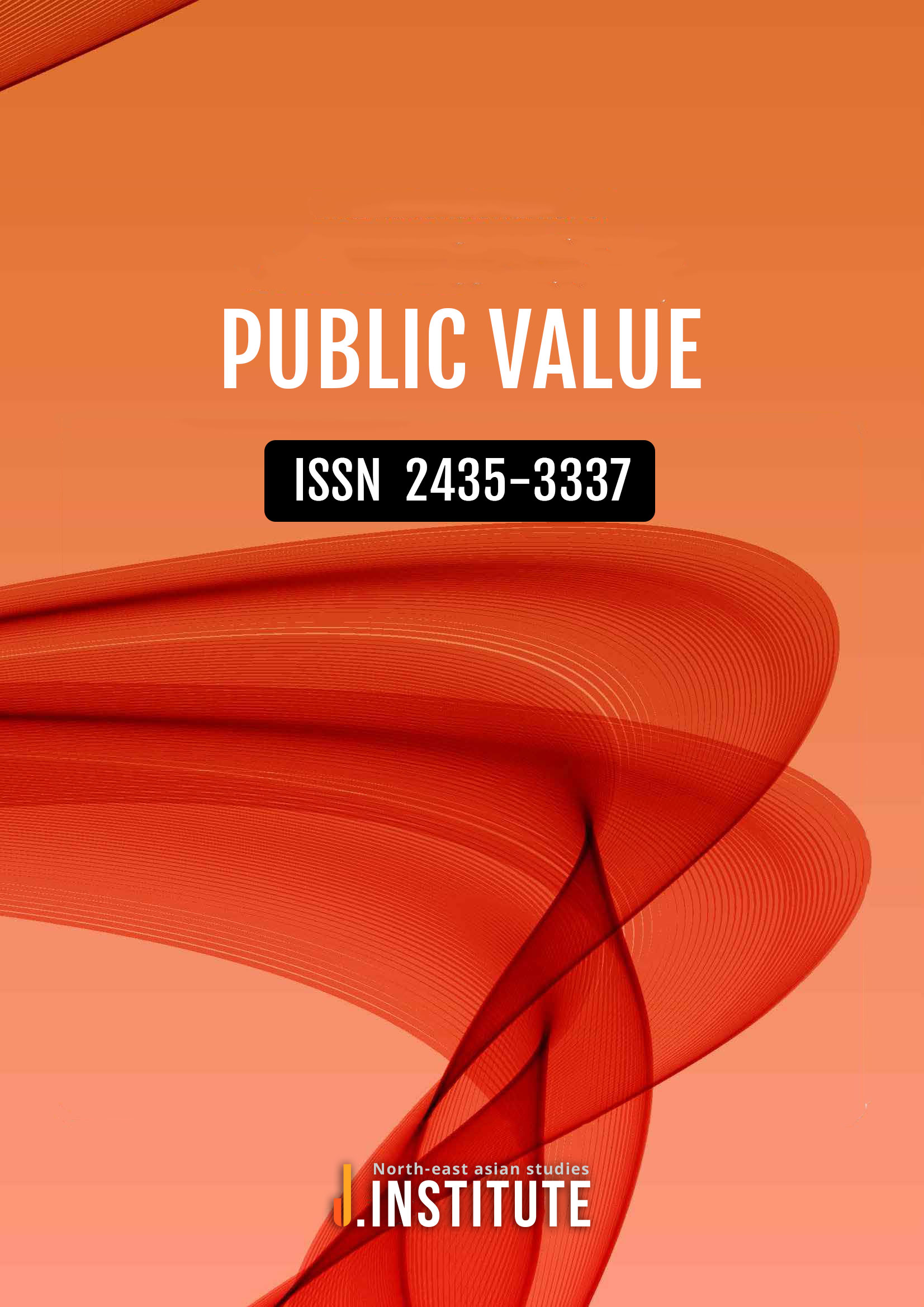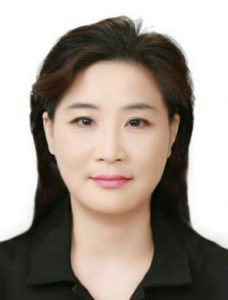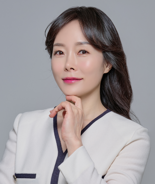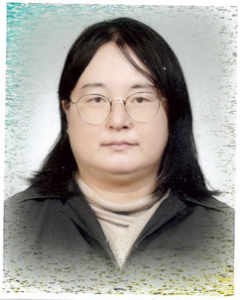Public values exist as diverse cultural and intangible assets and play an important role not only in our daily lives but also socially. They play a major role in strengthening social cohesion by forming social bonds through social communication and relationships. It also promotes mutual understanding and cultural diversity by providing opportunities to encounter different cultures and perspectives.
This phenomenon promotes the health and happiness of citizens, provides respite from a tiring city, and helps maintain a healthy life. Additionally, cultural activities in public places provide people with enjoyment and satisfaction, provide mental stability, and promote happiness. As always culture has given us a haven in our lives.
This effect has a positive impact not only on individual happiness but also on society, and promotes social well-being and development, thereby improving the environment and sustainability of the city. Based on this, harmony with nature can be achieved. Also, along with the cultural changes that surround, expanding internationalization is leading our lives in the direction of artistic values, and this announces the beginning of a new culture.
This journal has a wide-ranging, interdisciplinary character, aiming at the healthy growth of individuals and the progressive growth of society by multilateral and scientific research on public values and culture. Along with the cultural changes that surround us, expanding internationalization is leading our lives in the direction of artistic values, and this announces the beginning of a new culture. Culture is the basis of life and at the same time our life and public value. By examining and organizing new perceptions of this, we emphasize the importance of public values for culture, add elegance to our lives, and make it a valuable record even into the distant future. Detail the contribution of human beings to society through a cultural approach to public values.
Detail with a we recommend that potential authors review recent issues to determine whether their paper is appropriate to the journal.
Aims & Scope
Area 1 Value of Life
Area 2 Cultural
Area 3 Humanities and Arts
Latest Articles
+ View all articles
-
Purpose: In Korean society, the use of scientific and data-based skin care and beauty equipment that can enhance skin improvement effects is rapidly increasing, and effectiveness research related to skin improvement effects is also increasing. This study was conducted with the purpose of proposing a smart beauty direction using skin care equipment for the sustainability of the Korean beauty industry, which is not limited to cosmetics exports. The contents of this study can help set the innovative direction of K-Smart Beauty. Method: In this study, to investigate the sustainability of the Korean beauty industry, we conducted a literature search related to the beauty industry published within the past 10 years in Korea Research Information Sharing Service, PubMed, and Google Scholar. Among them, a literature review was conducted on papers judged to be deeply related to the content of the study. Results: Smart beauty device utilizes convergence IT technology to measure physical condition and is becoming an innovative way to improve an individual's appearance to be healthy and beautiful. Providing a scientifically tailored beauty care method that individually considers the characteristics of each factor and type of the body can provide sophisticated and effective results, unlike beauty methods, and can scientifically reflect how to maintain and improve health. It is a system that exists. As a result of the study, the concept and licensing standards for non-medical health care services in Korea were confirmed through a literature review. We classified the types of smart beauty equipment, presented their main functions, and confirmed that a new leap forward is needed, including sustainability. Conclusion: Smart Beauty can be seen as a field that integrates the management of individual beauty and health by expanding the concept of Beauty & Health based on modern technology and knowledge. The scientific field of smart beauty equipment is an essential part, and therefore, the direction of research will require a hybrid type of research that combines the fields of natural science and social science.Keyword:Beauty Industry, Sustainability, Smart Beauty, Device, Innovation
-
Purpose: In modern society, as interest in appearance increases, interest in hairstyles has also increased. Accordingly, research on hair beauty devices related to hairstyle styling has also begun. Previous studies often focus on hairstyles or hair care products. This study focuses on hair beauty devices, which have rarely been studied. The purpose of this study is to study the effect of hair beauty device consumption value on repurchase intention. In addition, we aim to analyze the differences in major variables according to hair beauty characteristics. Method: To achieve the purpose of the study, an online survey was conducted targeting 262 subjects from their teens to their 60s living across the country. The data of this study were statistically analyzed using the SPSS 25.0 program as follows. First, exploratory factor analysis was performed to analyze the validity of the measurement tool, and reliability was analyzed. Second, frequency analysis and descriptive statistical analysis were per-formed to identify the level of research variables. Third, independent sample t-test, one-way ANOVA, and Scheffe's post hoc test were performed to identify differences in research variables depending on the characteristics of the research subjects. Fourth, chi-square test was performed to identify differences in hair beauty-related characteristics depending on the subjects' experience with wet heat magic machines. Fifth, multiple regression analysis was performed to determine the effect of consumption value on repurchase intention. The statistical analysis above was judged to be statistically significant based on a significance level of 5%. Results: First, hair beauty devices used for hairstyles are diverse, but the most frequently used ones are hair dryers and magic wands. The most frequently used locations are the bangs, and the most difficult locations are the crown and the back of the head. Second, in the results related to wet heat magic wands, more than half of the respondents had used them, and they also had some intention to purchase them. Third, in the results of verifying the differences according to general characteristics and hair beauty device-related characteristics, there were significant differences in variables according to gender, age, marital status, and occupation. Fourth, consumption value was found to have a significant effect on repurchase intention. Conclusion: This study confirmed how much influence the consumption value of hair beauty devices has on the intention to repurchase. In addition, it is expected that the purchase or repurchase of hair beauty devices will occur according to consumer satisfaction in the beauty industry field, as it provides an opportunity to understand the differences between dry heat and moist heat hair beauty devices, and at the same time, if moist heat hair beauty devices are gradually expanded, customers will be able to style their hair in a better environment and help them have safe and healthy hair.Keyword:Hair Beauty Devices, Consumption Value, Moist Heat Type Magic Devices, Hair Style, Repurchase Intention
-
Purpose: As concerns about hair loss increase, perceptions of wigs also increase, and wigs are beginning to receive attention as an important aspect of appearance management. There is a very limited amount of research that has verified the differences in purchasing intention, wig wearing perception, and related characteristics related to wigs. Therefore, this study analyzed the effects of men and women's perceptions of wearing wigs on wig purchasing intentions, as well as the differences in major variables according to hair condition and hair loss concerns, and suggested implications for this. Method: To achieve the purpose of the study, an online survey was conducted targeting 313 adult men and women in their 20s or older. Statistical analysis of the survey results was performed using the SPSS 25.0 program to analyze reliability analysis, factor analysis, frequency analysis, and difference analysis to identify information about the respondents, and multiple regression analysis to identify the influence relationship. Results: First, as a result of research on scalp and hair-related characteristics, many of the respondents felt that their hair volume had decreased and considered themselves thin and weak. In addition, 53.4% of respondents answered that volume (hair volume) was the most important aspect of hairstyles. Second, the differences in major variables by gender, age, marital status, highest level of education, occupation, interest in hair loss, and hair condition were significant. Third,, the results of the regression coefficient verification showed that wig wearing perception had a positive (+) effect on wig purchase intention. Conclusion: It was verified that wig wearing perception had an effect on wig purchase intention. In addition, it was possible to identify differences in major variables according to scalp hair characteristics. Through this, it is expected that it will be possible to derive an in-depth understanding of the wig market and contribute to the development of wig purchase services for the development of the wig industry.Keyword:Wig Wearing Perception, Purchase Intention, Hair Condition, Hair Loss Concerns, Wig
-
Purpose: This study examines the learning experience of make-up classes by evaluating the curriculum design of make-up courses using the Metaverse platform and the satisfaction levels of freshmen students of Generation Z. The findings of this study will inform the potential use of make-up classes using the Metaverse and contribute to the development of educational programmers. Method: In order to verify the satisfaction of make-up education among college freshmen, basic make-up was selected, and a questionnaire on the satisfaction of the class was conducted on 60 college students in the first year of beauty major, and the comparison was analyzed using a paired sample (pre-post) t-test. Results: After reviewing the case study method selected according to the research topic, this study selected ifland among the metaverse platforms for first-year students who participated in the basic make-up course and applied it to the class. The educational factors, psychological factors, and environmental factors of class satisfaction were found to be significantly different with higher mean values for ifland educational factors compared to traditional make-up education. These results suggest that students can develop self-directed learning skills, problem-solving skills, and digital literacy in the new environment, and instructors need not only teaching and learning methods and subject matter expertise that are different from the traditional classroom environment, but also metaverse literacy as a basic competence to understand and freely utilise the metaverse. Conclusion: This study was designed and conducted by the researcher for freshmen beauty majors, so it is difficult to generalise the findings to the education as a whole. In addition, there are limitations that may result in different results depending on the instructor's teaching method, but the positive results of this study on basic make-up education in the metaverse suggest that follow-up studies on education using various metaverse plat-forms should be conducted.Keyword:Metaverse Platform, Ifland, Make-Up Classes, Learning Experience, Satisfaction
-
Purpose: Imhagugok, located in the Banbyeoncheon area east of Andong, upstream of the Nakdong River, and managed by a clan group, was called 'Banbyeongugok' because it was set in Banbyeoncheon and was often visited by Confucian scholars. However, the construction of the Imha Dam brought about profound landscape changes in the Imhagugok. Therefore, by referring to pre-submergence photo albums, old literature databases, and related research papers, including the submerged valley points, researchers extract landscape elements and interpret them from a human and natural perspective to understand the characteristics of the cultural landscape. Method: Landscape elements were extracted by classifying them into natural elements and cultural elements using Kim Hyun's (1993) classification method, and were divided by characteristics into three elements: form, climate, and human. Form elements were divided into topography/geology, architecture, water space, vegetation, and animals. Climate elements were divided into visuals, climate and weather, and seasons, and human elements were divided into thought and meaning. The cultural landscape interpretation method was to visit a valley and analyze how the physical and cognitive characteristics of the valley were expressed. Results: Among the landscape elements of Imhagugok, the first valley had a large proportion of natural elements, and from the second to fourth valleys, natural elements and cultural elements were similar. The proportion of cultural elements increased in the fifth valley, and the proportion of natural elements increased again in the sixth and seventh valleys. From the eighth to the ninth valley, natural and cultural elements appeared similarly. Gyeongpodae in the first valley, Songseok in the sixth valley, and Doyeon Falls in the seventh valley had beautiful scenery, so it could be assumed that the proportion of natural elements was increasing. Conclusion: Near Imhagugok, there are Yaksan, Waryongsan, Gaehosong Forest, Songseok, and Baekunjeong, which have outstanding natural scenery, and the scenic spot 'Baekunjeong and Gaehosong Forest' with great historical value is located. Through this study, researchers hope to look back on the forgotten and disappearing old scenery of the Imhagugok, to understand the spirit of the times through the travel culture of ancient scholars, to awaken the importance of the remaining scenery and serve as an opportunity to think about the relationship between humans and nature.Keyword:Imhagugok, Gugok Culture, Cultural Landscape, Baekunjeong, Landscape Elements
Publishing Schedule
| JAN | FEB | MAR | APR | MAY | JUN | JUL | AUG | SEP | OCT | NOV | DEC | |
|---|---|---|---|---|---|---|---|---|---|---|---|---|
| Submission | 8/30 | |||||||||||
| Editorial Review | 9/10 | |||||||||||
| Double Blind Peer Review | 9/30 | |||||||||||
| Review-Form Reflection Review | 10/10 | |||||||||||
| Accepted | 10/20 | |||||||||||
| Manuscript Editing Review | 10/30 | |||||||||||
| Scientific Proofreading | 11/30 | |||||||||||
| Open & Hybrid Review | 12/10 | |||||||||||
| Published | 12/30 |
♦ Issues Per Year: Annual
Board Members
Head of Editorial Organization / President
Eunjoo Choi
Westminster Graduate University, KOR
[Curriculum Vitae]
General Vice President
Jiyoung Lee
Jeonju Vision College, KOR
[Curriculum Vitae]
Vice President
| Jiyoung Seo Planning and Coordination | Yewon Arts University, KOR |
| Jin Lee Public Relations | Open Cyber University of Korea, KOR |
Editor in Chief
Seohyun Song
Osan University, KOR
[Curriculum Vitae]
Executive Editor
Kukjeong Hwang
Gyeongsang National University, KOR
[Curriculum Vitae]
Editor in Administrations
| Aswati Hamzah | University Sains Malaysia, Malaysia |
| Byunghyun Yoon | Suwon Beauty Technical College, KOR |
| Eunsook Seo | Dongguk University, KOR |
| Hwanhee Jung | Yewon Arts University, KOR |
| Jacqueline Z. Wilson | Australian Catholic University, Australia |
| Jeongshin Park | Joongbu University, KOR |
| Jihyun Song | Yewon Arts University, KOR |
| Miseung Park | Yewon Arts University, KOR |
| Seongeun Park | Yewon Arts University, KOR |
| Songhee Lee | Yewon Arts University, KOR |
| Tamunang Tamutana Timothy | Zhengzhou Normal University, China |
| Waseq Billah | Oregon State University, USA |
| Yang Luo | Dongguk University, KOR |
| Youngsoon Kim | Westminster Graduate School of Theology, KOR |
History
| 2015 | ||
| JUN. 23 | Establishment of the Publisher | |
| DEC. 05 | Inaugural General Meeting | |
| 2016 | FEB. 19 | International Journal of Criminal Study (ISSN 2423-8783) |
| JUN. 30 | First Journal Publication | |
| OCT. 11 | Digital Object Identifier Enrollment (DOI) Google Scholar |
|
| 2019 | APR. 23 | EBSCO |
| MAY. 07 | ProQuest Exribris |
|
| DEC. 30 | Title Alteration: Public Value (ISSN 2435-3337) | |
| 2020 | NOV. 02 | KCI (Korea Citation Index) |

Paper Submit
- inquiry@j-institute.org










